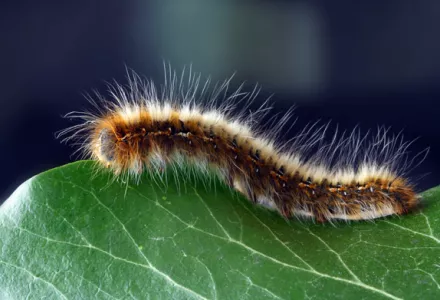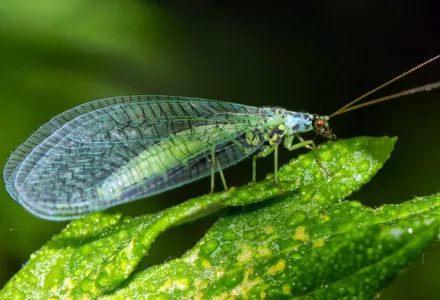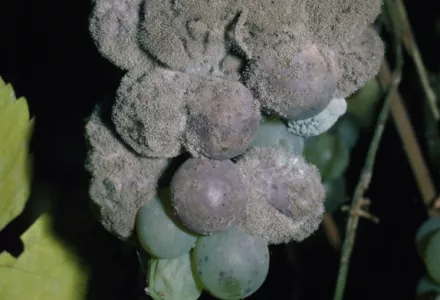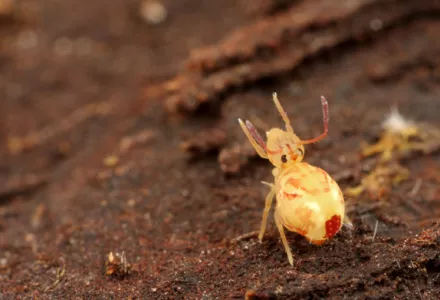Getting the most out of foliar sprays
Foliar sprays certainly have their role within our gardens, yet some applications are most efficient in the root zone. It really depends on what the spray is and what you are trying to achieve. Here's the scoop on foliar spraying and how to know when to pull it from the toolkit.
Foliar spraying is a technique of applying nutrients, boosters, or pesticides directly to the leaves and stems of a plant, where the liquid material is absorbed through the plant's pores, called stomata, and also through the epidermis. Foliar feeding can be 8 to 20 times as efficient as ground applications and prompt a quick reaction in the plant, visible within 48 hours. However, know that this efficiency typically is not achieved in actual practice and there are trade-offs with foliar spraying.

Foliar spray applications
Treating a nutrient deficiency
Foliar feeding often is the preferred means of correcting deficiencies in secondary nutrients and micronutrients. For example, foliar feeding is often done to manage zinc deficiencies in pecans and calcium sprays have often been recommended to prevent blossom-end rot in tomatoes. The best way to determine a deficiency would be with a tissue nutrient test.
Encouraging plant stage development
Fertilization in general can be used as a strategy for influencing flowering, fruit set, fruit size, and vegetative growth. Citrus growers foliar feed fertilizer blends dominated with potassium and nitrate to increase fruit size after the fruit is well set. Generally, blends dominated by potassium, nitrate-nitrogen, calcium, and chlorine tend to promote vegetative growth and fruit size while blends dominated with ammonium nitrogen, phosphorus, sulfur, and manganese encourage fruit and seed setting. Foliar fed nutrients can also spur along important enzymatic systems of the plant.
Environmental benefit
Over the past several decades, groundwater in agricultural areas has become contaminated with increased levels of nitrate. Foliar applications offer an alternative, efficient method of applying nitrogen that can be used in addition to feeding nutrients to the roots or in high-need situations. Under best-use guidelines, a foliar nitrogen spray may be optimized at nearly 95-100%, whereas the recovery of nitrogen applied to natural, soil settings ranges from 15-62%. Foliar applications can also be done when the soil temperature is too cool to allow proper nutrient uptake.
However, foliar applications absolutely cannot replace soil based applications, but instead can be used in concert with them. If foliar applications were used as the sole means of supplying nutrients to the plant, the plant would likely be burned by too high of concentrations applied to its leaf surfaces.

Sea-based and fermentation products
Marine algae mixes, especially kelp, are popular products for foliar feeding because they contain trace nutrients and help with growth and development. In research on strawberry plants, foliar sprays of sea-based products have been shown to increase plant vegetative growth, nutrient content, and fruit yield and quality.
Finely crafted fermentation products, can also be applied as a foliar spray. These need to be intentionally created fermentation products and are often made using plants, worm castings, fish materials, molasses, and high quality compost. The beneficial microbes in fermentation products have been shown to help suppress foliar diseases, increase the amount of nutrients available to the plant, and increase fruit quality.
Treating pests and easing stress
Foliar applications, especially sea-based, can also be used to help plants recover from transplant shock, hail damage, or other stress. Often pesticide applications are best applied as a foliar so that they come in direct contact with the fungus, bacteria, or insect pest physically present on the plant. Compost tea has become a popular foliar spray because of its ability to suppress diseases as well. Lastly, a foliar may be a good option for cuttings, since they have limited root development for absorbing nutrients.
Best techniques for foliar spraying

Timing and environmental conditions
Apply a foliar treatment early in the day or late in the evening, when there is minimal wind and the temperatures are below 80°F, since the stomata close in high heat. Try to keep the humidity less than 60% to prevent fungal diseases like powdery mildew. If striving to affect plant development, apply prior to target growth stage to be affected.
Make the right solution!
Use a very dilute solution of nutrient formulations and follow product guidelines as recommended. Highly concentrated sprays will not give you more bang for your buck and have the potential to burn plant foliage, especially those made with inorganic salt-based fertilizers.
It is better to apply small amounts of active material more frequently than it is to drench the foliage with a high concentration.
The spray solution should have a pH in the near neutral range, around 5.5-7.5. Also, keep in mind that if you are trying to spray beneficial organisms, chlorinated water can kill them. Leave water to stand in an open tank overnight so that the chlorine volatilizes.
Spray quality
The best application comes from a fine, atomized spray, which can be achieved by increasing sprayer pressure or using a mist blower. Be sure to spray the undersides of leaves, since this is where most of the plants stomates are located. You'll want to have even coverage, sprayed just till you see a little drip. The point is not to drench the plant so droplets of solution are running off it. Instead, you want an even, light mist covering the plant.
So, are you going to spray?
Foliar applications are highly situational and depend on the preference of the grower. For many of us, the decision will also be based on the most economical solution. Bear in mind that foliar spraying requires additional prep and labor. As always, the most efficient means of production is to maintain a well-balanced nutritive diet and hygienic growing conditions, so as to prevent the need for remediation in the future.






























